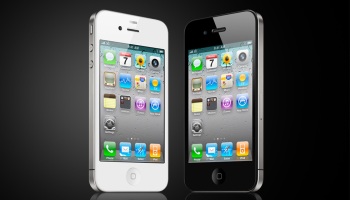Apple’s iPhone 4 Isn’t Really 4G

Apple’s tie to AT&T in the US means that the iPhone 4 doesn’t actually do 4G, but it does regain technological ground lost to Google Android devices
The enterprise-related improvements, along with multi-tasking, help Apple move beyond being a target for the makers of Android devices that have been taking shots at the iPhone since Android 2.1 came out. They do not, however, appear to move the iPhone Gen 4 past the Android world in ways that matter significantly to enterprise users.
What is more likely to matter are more reliable communications and a better screen. The new antenna system on the iPhone actually consists of the metal edge surrounding the perimeter of the device. This perimeter is divided into two physical antennas, one for WiFi, Bluetooth and GPS and the other for GSM and UMTS (3G). This new design many have been dictated by AT&T’s spotty 3G service. The new screen will make the device easier to read and make for more useful images.
The iPhone’s new camera is a 5 megapixel unit. It will also shoot full-motion HD video. There’s also a new version of iMovie coming out that will let you create videos on the device itself. This could be potentially useful for some enterprises.
Consumer features
 The dozens of other new features of the new iPhone are more consumer-oriented. The device supports Microsoft’s Bing. It has a six axis physical location sensors (including a gyro) for gamers and it supports Apple’s bookstore. There is a PDF reader available that will help with document viewing.
The dozens of other new features of the new iPhone are more consumer-oriented. The device supports Microsoft’s Bing. It has a six axis physical location sensors (including a gyro) for gamers and it supports Apple’s bookstore. There is a PDF reader available that will help with document viewing.
A potential downside, depending on how it’s used, is the advent of iAds. Applications can now be advertising supported, which may or may not sit well in the corporate environment. The device also includes a front-mounted camera and two microphones, which can support video conferencing. It remains to be seen just how well video conferencing works in a hand-held environment and whether the 3G network will support it adequately.
There’s no question that the new iPhone will sell a lot of units. Whether it will work better for your business than the recently released Droid Incredible from Verizon or last week’s Sprint Evo depends more on your specific needs than anything else.
The new iPhone is sure to set off a new series of innovations in hand-held device design, but that new series was already rolling. What will probably matter most to your company is whether you’re already using apps for the iPhone or for Android devices; whether you need to develop custom apps for your devices (which could eliminate the iPhone); and whether you’re already under contract to another carrier.
What the new iPhone does do is bring Apple into the same league as the latest Android devices. It’s also priced similarly, with an 8GB model selling for $199 (£138) with a 2 year contract and a 16 GB model going for $299 (£207). AT&T is offering upgrades up to 6 months sooner than they would otherwise be available as a way to keep customers from moving to Android and encourage adoption of the new AT&T data rate plan. The new iPhone will be available on 24 June and comes in two colours – black and white.